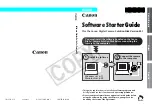
Temporarily Unavailable Device
By default, LVM retries I/O requests with recoverable errors until they succeed or the system is
rebooted. Therefore, if an application or file system stalls, your troubleshooting must include
checking the console log for problems with your disk drives and taking action to restore the failing
devices to service.
Permanently Unavailable Device
If retrying the I/O request never succeeds (for example, the disk was physically removed), your
application or file system might block indefinitely. If your application is not responding, you might
need to reboot your system.
As an alternative to rebooting, you can control how long LVM retries a recoverable error before
treating it as nonrecoverable by setting a timeout on the logical volume. If the device fails to respond
within that time, LVM returns an I/O error to the caller. This timeout value is subject to any underlying
physical volume timeout and driver timeout, so LVM can return the I/O error seconds after the
logical volume timeout expired.
The timeout value is normally zero, which is interpreted as an infinite timeout. Thus, no I/O request
returns to the caller until it completes successfully.
View the timeout value for a logical volume using the
lvdisplay
command, as follows:
# lvdisplay /dev/vg00/lvol1 | grep Timeout
IO Timeout (Seconds) default
Set the timeout value using the
-t
option of the
lvchange
command. This sets the timeout value
in seconds for a logical volume. For example, to set the timeout for
/dev/vg01/lvol1
to one
minute, enter the following command:
# lvchange -t 60 /dev/vg01/lvol1
CAUTION:
Setting a timeout on a logical volume increases the likelihood of transient errors being
treated as nonrecoverable errors, so any application that reads or writes to the logical volume can
experience I/O errors. If your application is not prepared to handle such errors, keep the default
infinite logical volume timeout.
TIP:
Set the logical volume timeout to an integral multiple of any timeout assigned to the underlying
physical volumes. Otherwise, the actual duration of the I/O request can exceed the logical volume
timeout. For details on how to change the I/O timeout value on a physical volume, see
pvchange(1M).
Nonrecoverable Errors
Nonrecoverable errors are considered fatal; there is no expectation that retrying the operation will
work.
If you have a current copy of the data on a separate, functioning mirror, then LVM directs reads
and writes to that mirror copy. The I/O operation for the application accessing the logical volume
completes successfully.
However, if you have no other copies of the data, then LVM returns an error to the subsystem
accessing the logical volume. Thus, any application directly accessing a logical volume must be
prepared for I/O requests to fail. File systems such as VxFS and most database applications are
designed to recover from error situations; for example, if VxFS encounters an I/O error, it might
disable access to a file system or a subset of the files in it.
LVM considers the following two situations nonrecoverable.
110
Troubleshooting LVM
















































